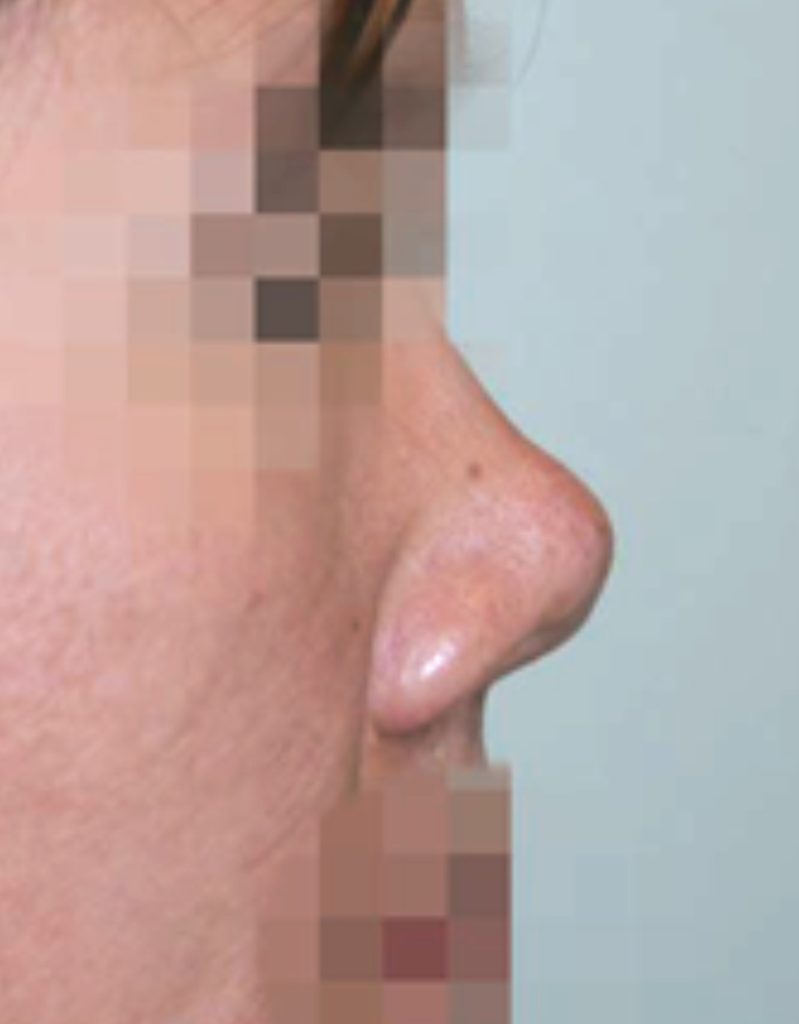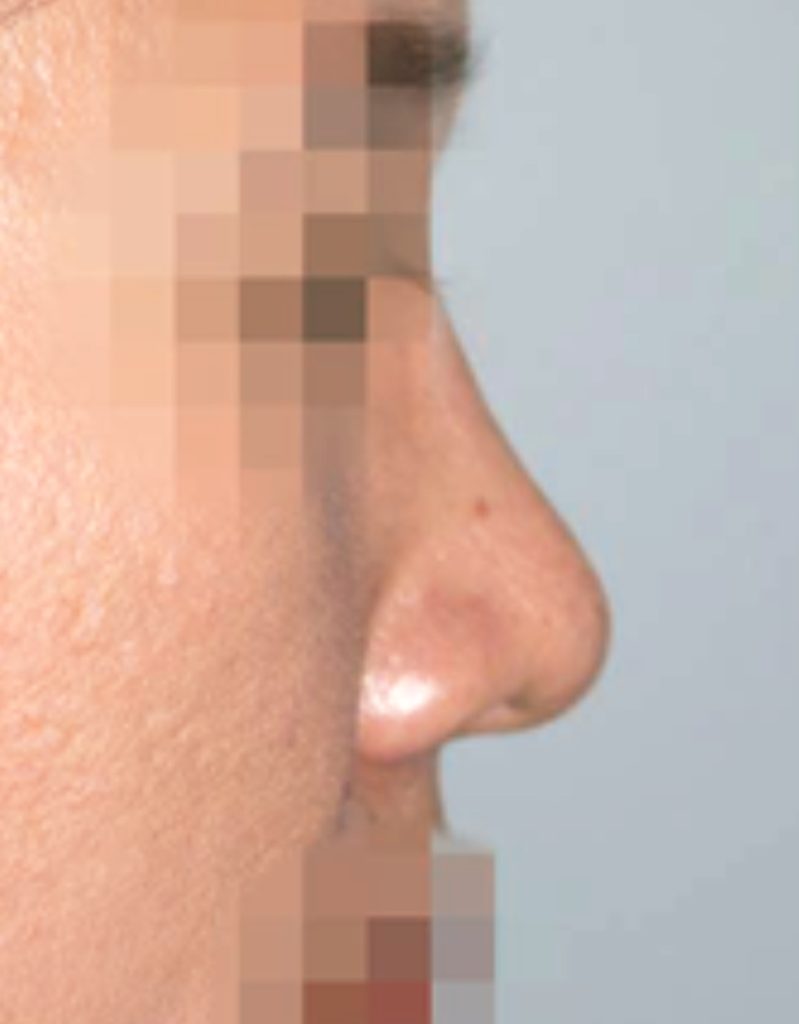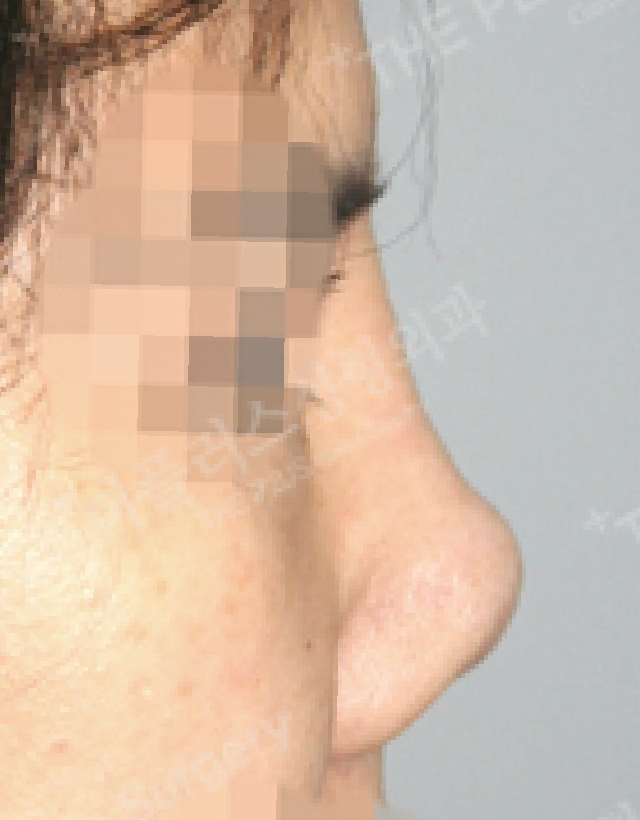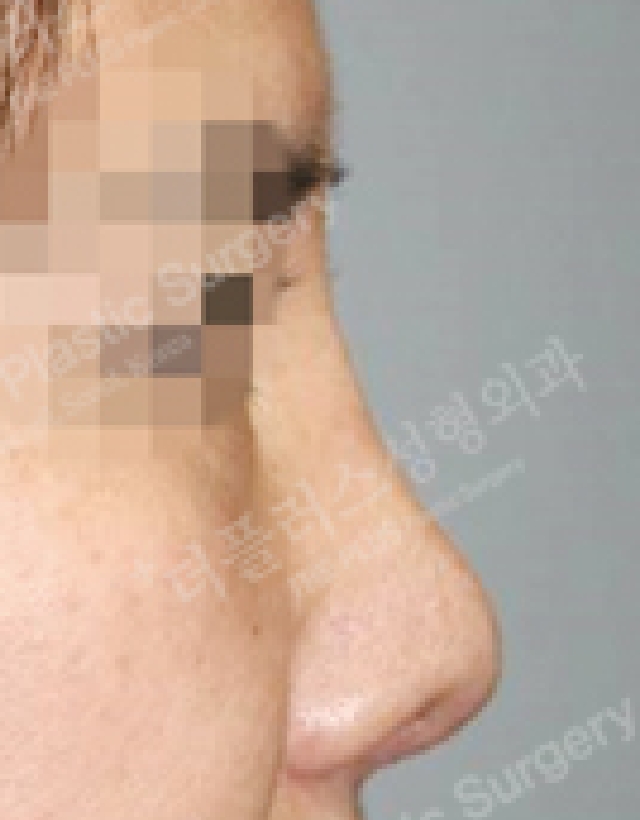THE PLUS RHINOPLASTY IN KOREA
Contracted Nose Revision Rhinoplasty


THE PLUS RHINOPLASTY IN KOREA
Contracted Nose Revision Rhinoplasty
the plus rhinoplasty in Korea
Contracted Nose Revision Surgery
A contracted nose is a condition that arises from untreated inflammation post-surgery or from excessive nose surgeries, often leading to an elevated nose tip. Correcting a short nose due to contraction in secondary surgery is a complex and challenging procedure in the field of rhinoplasty. This is particularly true for Asians, who often have thick soft tissue and well-developed sebaceous glands, making length extension difficult.
Characteristics of a Contracted Nose
The contracted nose phenomenon is characterized by:
- Persistent scar formation and fibrosis of the nasal epithelium or subepithelial due to chronic inflammation.
- Epithelial contraction due to fibrosis and hypertrophy around the implant, especially silicone.
- Shortening of the space (scroll area) between the upper lateral cartilage and the alar cartilage, causing the alar cartilage to be pulled towards the upper lateral cartilage, narrowing the space between the cartilages or in severe cases, the two cartilages overlap.
- The outer layer of the skin, which has some mobility, is firmly adhered to the inner layer, a support structure whose length and volume have been reduced due to contraction and scarring, and is fixed rigidly.
- Formation of a biofilm around the implant if subclinical infection or chronic inflammation persists, and the infection is activated when the condition of the nose is not good.
What Are the Steps in Contracted Nose Surgery?
The surgery involves the following steps:
- Relieving the contraction of the nose.
- Removing the bad parts of the clumped epithelium inside the nose.
- Using autologous cartilage such as septal cartilage or ear cartilage to lengthen the shortened nose and lift the nose tip.
- Using additional cartilage if necessary.
When Should You Have Contracted Nose Surgery?
Typically, it is recommended to have the surgery at least 6 months after the previous surgery. If there have been many previous surgeries, it is recommended to wait at least 1 year. However, if an infection is progressing and the nose is being deformed, it is recommended to first treat the infection and then have cosmetic reoperation.
Contracted Nose Correction Cases


Shortened Pattern Due to Secondary Surgery (Secondary Contracted Pattern)
This refers to cases where the nose has become shorter due to secondary deformations such as contraction caused by problems that occurred in previous surgeries. Chronic inflammation caused by implants after surgery, if not resolved and prolonged, usually causes deformations around the tip of the nose. This is because the scar contraction caused by excessive contraction phenomenon pulls the relatively fluid nose tip to both sides (cephalic direction).
When a contracted nose occurs, the entire nose length usually shortens, and the nose tip moves upward to both sides. The characteristics are as follows:
- Persistent scar formation and fibrosis under the nasal skin or nasal skin due to chronic inflammation, etc.
- Occurrence of membrane contraction due to fibrosis and hypertrophy of the membrane around the implant, especially silicone.
- The scroll area, the space between the upper lateral cartilage and the septal cartilage, shortens, and the gap between the two cartilages narrows or in severe cases, the two cartilages overlap.
- The outer layer, specifically the nasal skin, adheres firmly to the inner support structure, whose length and volume have diminished due to scarring and contraction.
- If subclinical infection or chronic inflammation persists, a biofilm is formed around the implant.
Correction is much more difficult because the problem that causes contraction must be corrected together, and in some cases, it may need to be resolved through staged surgery.


See more before and after surgery photos.
View the research papers from The Plus Plastic Surgery medical team.
Frequently Asked Questions
What causes a contracted nose after rhinoplasty?
A contracted nose after rhinoplasty can result from untreated inflammation or having excessive nose surgeries. This condition may cause the nose tip to elevate and the entire nose length to shorten. Factors such as chronic inflammation and scar contraction can lead to this issue, requiring complex corrective procedures.
How long should I wait before considering contracted nose surgery after a previous rhinoplasty?
It is generally recommended to wait at least 6 months after your previous rhinoplasty before considering contracted nose surgery. If you have undergone multiple surgeries, waiting for at least 1 year is advisable. However, if there is an active infection, it should be treated first before proceeding with cosmetic reoperation.
Why is correcting a contracted nose particularly challenging for Asians?
Correcting a contracted nose for Asians can be particularly challenging due to the thick soft tissue and well-developed sebaceous glands often present. These characteristics make it difficult to extend the nose length during corrective surgery. Special expertise and techniques are required to address these complexities effectively.
